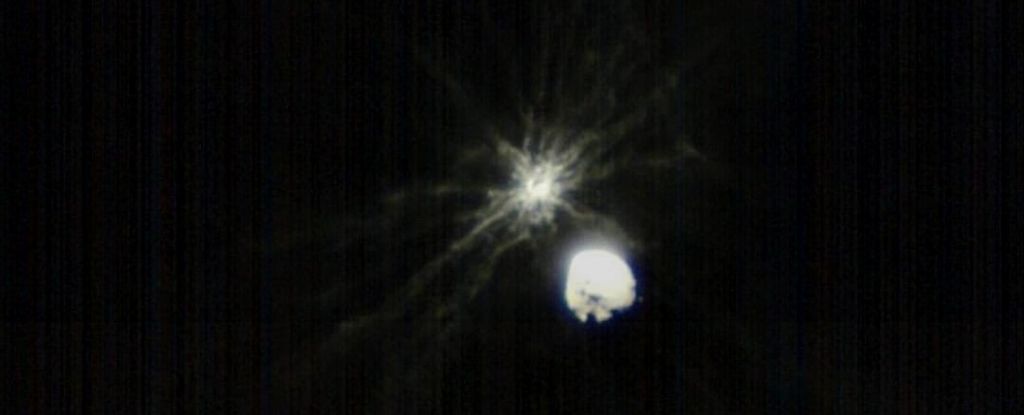Products You May Like
A citizen scientist has given us a brand new look at the time NASA slammed a spacecraft into an asteroid.
Using a bank of recently released raw images, amateur image processor Jacint Roger Perez compiled a series of stabilized videos of the DART spacecraft slamming into the asteroid Dimorphos, giving us a new perspective on and appreciation for the incredible event.
DART – which stands for Double Asteroid Redirection Test – was an experiment in altering an asteroid’s course using a spacecraft. The point of the exercise was to determine humanity’s capabilities of deflecting asteroids that might be on a collision-course with Earth.
#DART Mission#LICIACube – #Luke –
target: #Didymos #DimorphosNASA/ASI/j. Roger pic.twitter.com/S8Jqoqv4d7
— landru79 (@landru79) November 3, 2023
The target was a pair of asteroids in orbit around one another; the larger named Didymos, stretching 780 meters across (2,560 feet), and the smaller called Dimorphos, spanning 160 meters across (525 feet). Dimorphos orbited the larger rock once every 11.9 hours, more or less.
For the DART mission to succeed, the impact had to change the course of Dimoprhos enough to alter the orbital period.
The impact took place in September 2022, a magnificent affair that saw tendrils of ejecta erupting from Dimorphos as DART met its high-speed demise on the rock’s rubbly surface.
El impacto#DART Mission#LICIACube #Leia
target: #Didymos #DimorphosNASA/ASI/j. Roger https://t.co/5DhATiE6KQ pic.twitter.com/YBBsmkQVMQ
— landru79 (@landru79) November 5, 2023
The impact was observed by the Italian Space Agency’s LICIAcube, an observation spacecraft carried by DART and deployed prior to the impact to record from a distance. LICIACube was equipped with two cameras that recorded the event, capturing data to help scientists at home understand the consequences of smacking an asteroid.
It’s those raw LICIAcube images, only newly released to the public, that Perez processed and compiled into a number of videos that he has now posted to his X account, landru79.
In them, you can see the huge, snaking filaments of dust that erupted from the surface of Dimorphos, much larger than scientists had expected. The impact released over a million kilograms (2.2 million pounds) of material from the tiny asteroid, and created a tail that stretched for more than 10,000 kilometers (6,214 miles) for months afterward.
El impacto#DART Mission#LICIACube #Leia + #luke
target: #Didymos #DimorphosNASA/ASI/j. Roger pic.twitter.com/ohOA6UiEWx
— landru79 (@landru79) November 5, 2023
The impact succeeded in deflecting the asteroid, but not entirely for the reasons scientists thought. The orbital period was reduced by 33 minutes, which was a much more significant alteration than expected – one that couldn’t be accounted for entirely by the transfer of momentum from the DART spacecraft.
Rather, scientists found that the eruption of material from Dimorphos, which continued for weeks after the impact, was responsible for most of the change in the asteroid’s orbit. The escaping dust transferred way more momentum than the impact itself.
#DART Mission#LICIACube – #Luke – RGB
target: #Didymos #DimorphosNASA/ASI/N. Méndez/j. Roger pic.twitter.com/F0EXWOhQf4
— landru79 (@landru79) November 4, 2023
The results mean that not only can humans successfully divert the course of an asteroid millions of kilometers away, but that the composition of that asteroid needs to be taken into account when planning such missions. A loose, rubbly rock may be diverted more successfully than one with a tight structure that won’t lose as much material.
Johns Hopkins University has a whole website where you can review the DART mission and its results. If you’d like to try your hand at processing LICIcube’s images, you can download those here. And, if you’re on X, hop on over and give Perez a follow and check out the rest of his videos from the DART mission.
